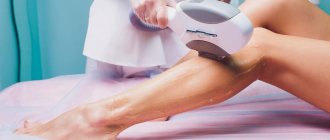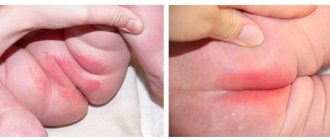It is known that you cannot take antibiotics without a doctor’s prescription. These are powerful medications that kill bacteria and prevent the development of severe complications. Thanks to them, humanity has managed to defeat many dangerous diseases. However, it is important to know that antibacterial drugs bring not only benefits, but also harm to the body. In the fight against pathogenic agents, they also destroy beneficial microflora.
Do you have acne on your face after taking antibiotics? This is one of the possible side effects of antibiotic therapy. Find out why skin rashes occur and how to get rid of them.
What is the cause of acne?
The phenomenon has been studied for many years and today experts have been able to identify several factors responsible for the development of the disease. Genetic predisposition and hormonal imbalance - these reasons are well known to us. But experts name several more important factors: overactivity of the sebaceous glands, which causes excessive secretion of sebum, and an increase in the number of propionbacteria acne, which aggravates hyperkeratosis. This, in turn, becomes one of the causes of blockage of the ducts of the sebaceous glands.
The appearance of skin rashes can also be caused by poor diet, stress, and improper care.
Aggressive cosmetics, including comedogenic cosmetics, block pores and create favorable conditions for exacerbation of acne. The process begins with dead skin cells remaining on the surface and accumulating in the pores, clogging them. As a result, an oxygen-free space is created - an ideal environment for the proliferation of anaerobic bacteria. They multiply rapidly, skin pores enlarge, and inflammation begins.
Addressing the problem of antibiotic resistance
One of the most pressing problems is antibiotic resistance. To reduce the risk of its development, it is necessary to adhere to the following rules for the use of antibiotics18:
- the duration of use should not be more than 8 weeks;
- it is necessary to avoid the combined use of topical and oral antibacterial agents without external use of benzoyl peroxide;
- It is required, if possible, to limit the use of antibacterial drugs in terms of frequency of prescription and duration of use;
- Systemic and topical antibiotics should not be used in maintenance or monotherapy.
Do only young people get sick?
Acne most often develops in girls under 25 years of age. But the disease does not go away with age. Moreover, over the years, acne “ideas” become more and more inventive. Purulent nodes, painful phlegmonous acne, deep scars and even potholes appear. There is no point in fighting acne with improvised products bought on the advice of a friend, Instagram or even a pharmacist. There is no guarantee that grandmother’s recipes, tested over the years, will help.
Acne is a personalized disease, that is, it occurs differently for everyone, so treatment must be individualized. Self-medication will aggravate the process and delay it for several years. Only systemic therapy, which is prescribed by a doctor, will help solve the problem, and he also monitors the result and course of the disease.
Symptoms of an allergy to antibiotics: how does it manifest itself in adults, infants and older children?
Among the antibiotics that cause allergies more often than others, it is worth mentioning penicillin drugs. Therefore, when prescribing them to children and adults, it is necessary to especially carefully monitor the patient’s condition in order to prevent severe (and even life-threatening) conditions, such as anaphylaxis and serum-like syndrome.
Signs of anaphylaxis occur relatively quickly - within 5-30 minutes after taking the drug. They manifest themselves in the form of a sharp decrease in blood pressure, the appearance of cold sweat, heart rhythm disturbances, bronchospasm and swelling of the larynx, and urticaria.
Serum-like syndrome is represented by the appearance of fever and weakness, enlarged lymph nodes, joint pain; in some cases, damage to internal organs may be present. Unlike anaphylaxis, the symptoms of which appear quickly, serum-like syndrome appears 1-3 weeks after taking the drug.
Among the life-threatening symptoms of an allergy to antibiotics, it is also worth noting epidermal necrosis caused by Stevens-Johnson syndrome or Lyell's syndrome.
Relatively harmless signs of allergies after taking antibiotics include the appearance of skin itching and redness. These symptoms are not life-threatening, but can cause significant discomfort to a person.
As for age differences, both adults and children suffer from allergies to antibacterial drugs. Therefore, in order to avoid the possible occurrence of negative consequences, when prescribing such drugs to infants and older children, the doctor must correlate the expected benefits of therapy with the possible harm.
How quickly can acne be cured?
Treatment is quite long, because acne is accompanied by periods of remission and exacerbation. You can finally cope in at least six months, or even eight months. The fact is that the skin cell renewal cycle is 28–32 days. During this time, we will not understand how effective the treatment is; at least three layers of skin cells need to be renewed during therapy. If you neglect this condition, you can get a post-acne symptom complex - a large number of rashes, age spots, atrophic and hypertrophic scars, milia (horny cysts of the upper layer of skin).
Clindovit® - 1% clindamycin gel
If pimples* appear on the back, face, décolleté, or other areas, you must contact a dermatologist, who will prescribe adequate treatment based on data on the number of acne elements, prevalence, and depth of the process18.
Clindovit® is a topical antibiotic. Its main active ingredient is clindamycin phosphate6. The base contains additional components: allantoin helps relieve inflammation, regeneration, emollient softens and moisturizes the skin4,5.
Clindovit® must be used twice a day6. The visible effect of using the drug usually occurs after 6-8 weeks6.
*acne
Do folk remedies help with acne?
Despite the fact that there are certain clinical recommendations that guide the entire medical world, therapy depends on the form, degree and severity of acne. Simply put, it is strictly individual. For moderate severity, a systemic approach is used: a course of oral antibiotics and external agents - creams - which may contain tetracycline antibiotics.
The form of dermatological talker, which is no-no, but is still used, is irrelevant and ineffective. The mash contains alcohol, and it is known to dry the skin, change the acid-base balance and increase the secretion of subcutaneous sebum, which further provokes inflammation.
Clinical researches
Clinical studies have proven the effectiveness, safety and tolerability of the products. The products are suitable for daily care of children's skin with mild to moderate forms of atopic dermatitis and during remission, accompanied by a decrease in the quality of life of patients.
Cream for sensitive skin reduces itching and irritation, relieves redness of the skin, moisturizes and gently cares for it.
Sources:
- Kamasheva G.R., Khakimova R.F. Valiullina S.A., Methods for assessing the severity of atopic dermatitis in young children, Dermatology journal, 2010
- Kovyazina N.A., Fedosimova N.A., Illek Ya. Yu. Diagnosis of atopic dermatitis in young children, Vyatka Medical Bulletin, 2007
- Smirnova G.I. Managing the course of the disease: atopic dermatitis in children, Russian pediatric journal, 2014
Photos of dermatitis
Photo album on the diseaseIs it possible to do without antibiotics?
In severe cases, treatment may be required from different specialists: not only from a dermatologist, but also from an endocrinologist and gynecologist. Treatment may also include low-dose forms of antibiotics; they are prescribed in dosages that allow the therapy to be extended for several months and to achieve an anti-inflammatory effect rather than an antibacterial one. Depending on the results, the doctor may combine antibiotics with other drugs.
The gold standard for topical acne treatment is a combination of retinol (a form of vitamin A) and the antimicrobial basiron, which is not inherently an antibiotic, but when interacted with the skin in a certain way produces free oxygen that kills P. acnes,
bacteria, since it can only live in an oxygen-free environment.
In some cases, your doctor may prescribe antiparasitic medications. At the discretion of the doctor, oral antibiotics may also be prescribed. And only after this - a competent course of probiotics and bacteriophages to restore the intestinal microflora. Taking probiotics and antibiotics together is not effective!
Link to publication: kiz.ru
Allergies after antibiotics: causes
The following prerequisites for the development of this condition are identified:
- Heredity. The likelihood of developing an atypical reaction in children born to parents with an allergy to antibiotics is higher than in those who do not have close relatives with intolerance to these drugs.
- Presence of concomitant diseases. If a patient is diagnosed with HIV or infectious mononucleosis, the possibility of allergies after taking antibiotics increases.
- The presence of an atypical reaction to other allergens. A person suffering from intolerance to a particular allergen substance will automatically be at risk. For example, the likelihood of an allergy to penicillin antibiotics increases if a person has an atypical reaction to other medications, as well as to mold.
- Exhaustion caused by hunger, lack of essential vitamins and minerals, excessive physical and emotional stress, bad habits (drinking alcohol, drug addiction and smoking). A decrease in the body's functional capabilities leads to disruptions in the normal functioning of the immune system, which may result in a tendency to allergic reactions.
How to take Fluconazole for thrush?
With this pathology, patients can purchase medicine without a prescription and on the advice of a pharmacist. If you visit a doctor, he will confidently prescribe Fluconazole even before receiving test results for pathogens. Later, if the examination results are available, the doctor will only need to adjust the treatment regimen, or continue the chosen tactics. Fluconazole capsules help very quickly.
When taken orally, the level of bioavailability of the drug is as high as when administered intravenously, so it is enough to take one 150 mg capsule once with water. To prevent symptoms from returning, it is possible to take the drug every three days, with a total of 3 doses - on days 1, 4 and 7.
Fluconazole can begin to work within a day. In particular, the manufacturer of the original drug Pfizer (Diflucan) specifically reports that relief occurs within 24 hours. However, it is necessary to consult a doctor in order to exclude the presence of other pathogenic agents.
Fluconazole 150 mg
Thrush itself is not a sexually transmitted infection. Candidiasis develops against a background of reduced immunity, for example, after using antibiotics, when wearing synthetic underwear, during periods of very hot weather and even under stress. During a visit to the doctor, patients must be informed about the presence of a sexual partner so that preventive or therapeutic measures can be prescribed.
Women often ask the question: can cystitis appear from thrush? In this case, only the doctor can give an objective answer. The development of cystitis against the background of thrush is a very real scenario if the patient ignores visiting a specialist. Yeast-like fungi travel from the urethra to the bladder and cause inflammation there. Symptoms of vaginal candidiasis and cystitis may be similar. In the future, the infection from the bladder can reach the kidneys and there lead to acute renal failure. Therefore, therapy must be started on time. Sometimes women do not have candidiasis, but it develops after treating cystitis with antibiotics. A doctor will help correct the unpleasant effect.
Fluconazole - indications for use
His range of prescriptions is very wide, since fungal infections can bother any person in cases where he has a reduced immune system. Candidiasis of the mucous membranes and skin is not dangerous in itself and is easily treatable. For example, in mild cases of thrush, it is enough to take just one Fluconazole capsule once. But problems arise when the fungus penetrates deep into organs and tissues; in such cases we are talking about systemic mycosis. Fortunately, the generalized form is rare and is treated by hospital doctors. In this article we will list general indications and focus on the over-the-counter form of the drug Fluconazole. Despite the safety and ease of taking the drug, we still do not recommend self-medication.
- vaginal candidiasis;*
- candidiasis on the mucous membranes of the oral cavity (oropharyngeal candidiasis), esophageal candidiasis;
- chronic candidiasis of the oral cavity in patients using dentures;*
- candidal balanitis (fungal inflammation of the male genital organ);*
- invasive (systemic) candidiasis;
- candiduria - (fungi of the genus Candida in the urine);
- chronic candidiasis on the skin and mucous membranes;
- dermatomycosis, including: dermatophytosis of the feet, trunk, groin, lichen versicolor and cutaneous candidiasis, when systemic therapy is prescribed;
- dermatophytosis of the nails (onychomycosis), when therapy with other drugs is impossible;
- cryptococcal meningitis;
- coccidioidomycosis.
* when local treatment is not applicable.
In cases where the patient’s immune system cannot cope, Fluconazole is prescribed to prevent relapses:
- cryptococcal meningitis;
- candidiasis of the oral cavity and esophagus in HIV-infected patients;
- vaginal candidiasis (if symptoms of thrush appeared 4 times a year or more);
- for the prevention of candidiasis in patients with prolonged neutropenia (with hematologic malignancies undergoing chemotherapy or hematopoietic stem cell transplantation).
Side effects of De Nol tablets
Side effects when taking De Nol are quite rare. These are various dyspeptic symptoms - nausea, vomiting, diarrhea. They do not require discontinuation of the drug.
Allergic skin reactions occur - rashes, urticaria, itching, burning. In cases of long-term use, encephalopathy may occur due to the accumulation of the main component of the drug in brain tissue.
Some conclusions
Helicobacter can be treated with the drug De-Nol.
Having studied the instructions for this drug, we can draw certain conclusions:
- De Nol has a bactericidal effect on Helicobacter without being an antibiotic
- Antibiotics are products isolated from a certain type of organic substance - fungi, yeast. The main component of De Nol is an inorganic compound.
- De Nol is an expensive drug, but there are also budget analogues of the well-known antiulcer drug.
- Treatment of ulcers is complex and “De Nol” cannot be used as a monotherapy drug.










